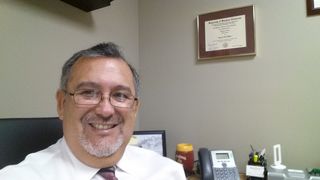The question of whether an attorney uses a conduit or accumulation trust in regards to an inherited IRA is a question of simplicity versus protection. Recently, the U.S. Supreme Court in Clark v. Remeker, ruled an inherited IRA is not "protected" from the reach of creditors.
 As practitioners, we can still protect an inherited IRA by ensuring the beneficiary is a trust, not an individual. They key question when utilizing a trust is whether to make it a conduit trust or an accumulation trust. What factors should you consider? If the practitioner wants simple for both himself and the client, a conduit trust is the answer. Conduit trusts provide that any and all distributions that come into the trust on an annual basis must be distributed out in the same year to the rightful beneficiary.
As practitioners, we can still protect an inherited IRA by ensuring the beneficiary is a trust, not an individual. They key question when utilizing a trust is whether to make it a conduit trust or an accumulation trust. What factors should you consider? If the practitioner wants simple for both himself and the client, a conduit trust is the answer. Conduit trusts provide that any and all distributions that come into the trust on an annual basis must be distributed out in the same year to the rightful beneficiary.
Therefore, the trust is merely a "conduit" to hold the IRA for the benefit of the beneficiary. While this provides asset protection of the underlying principal of the IRA, it does not provide any protection of the required distributions from the trust to the beneficiary.
Alternatively, practitioners can elect to provide for an accumulation trust. In an accumulation trust, the RMD (or other IRA distributions) is distributed from the IRA to the trust, but, the trustee has the option to "hold" the distribution and accumulate it with the principal of the trust. The major downside to an accumulation trust is if the RMD is held and accumulated, the trust must pay the tax on the income from the IRA and trusts are traditionally taxed at a much higher rate than individuals.
Why would one do this?
If the beneficiary is in the middle of a lawsuit or becomes subject to alimony or other liabilities, any income distributed to the beneficiary would be lost. So the question becomes what is the bigger loss, a potential twenty-five to forty percent income tax, or a 100 percent loss creditors or other legal obligation. An accumulation trust can also serve to protect a beneficiary from themselves. In addition to protecting the income and assets "for" the beneficiary. A properly drawn accumulation trust also protects the IRA and distributions "from" the beneficiary. Many of us are aware of individuals with children who inherit IRAs and their first item to purchase is a fancy new sports car that costs $50,000.00. To do this, requires the beneficiary has to withdraw $71,500.00 assuming a 30% tax rate which leaves $50,000.00 to purchase the car that's worth $40,000.00 when they drive it off the lot. Great way to turn $71,500.00 into $40,000.00 in a single act! In cases of spendthrift or other concerns, a accumulation trust provides the greatest option.
Perhaps the greatest advantage of an accumulation trust is you can have the best of both worlds, that is if you choose to distribute all RMD out in the year received to have it operate like a conduit trust. A conduit trust, however cannot hold money to be protected or distributed later like a accumulation trust. Accumulation trust also is a better choice if the beneficiary is in the maximum tax bracket, so any accumulation would not create any additional tax loss. When properly drawn both conduit and accumulation trusts can provide for all of the RMD be calculated on the age of one beneficiary, but the distributions of the RMD can be distributed out to other beneficiaries who are in a lower tax bracket (i.e. the children of the beneficiary).
So determining whether to use a conduit or accumulation trust is deciding whether simple is the goal or ultimate protection is the goal. It is critical that you properly educate your client so they can advise you of what's most important.
If you would like to know more about Lawyers With Purpose and discover three tried and tested time strategies to get a practice that allows you to help more people and be profitable join us on Thursday, March 12th for our "Having the Time to Have it All…Three Time Strategies to Have a Practice with Profit and Purpose" webinar.
Here's just some of what you'll discover in this practice-transforming event…
- How to effectively utilize your time to enroll your team to help as many people as you choose and profit from it too
- To work effectively with your team
- How to balance your work life and your personal life to ensure you are able to create the maximum amount of value in both
- How to have sufficient time to market consistently which will ensure consistent cash flow and free up the time you're currently spending chasing dollars.
David J. Zumpano, Esq, CPA, Co-founder Lawyers With Purpose, Founder and Senior Partner of Estate Planning Law Center











